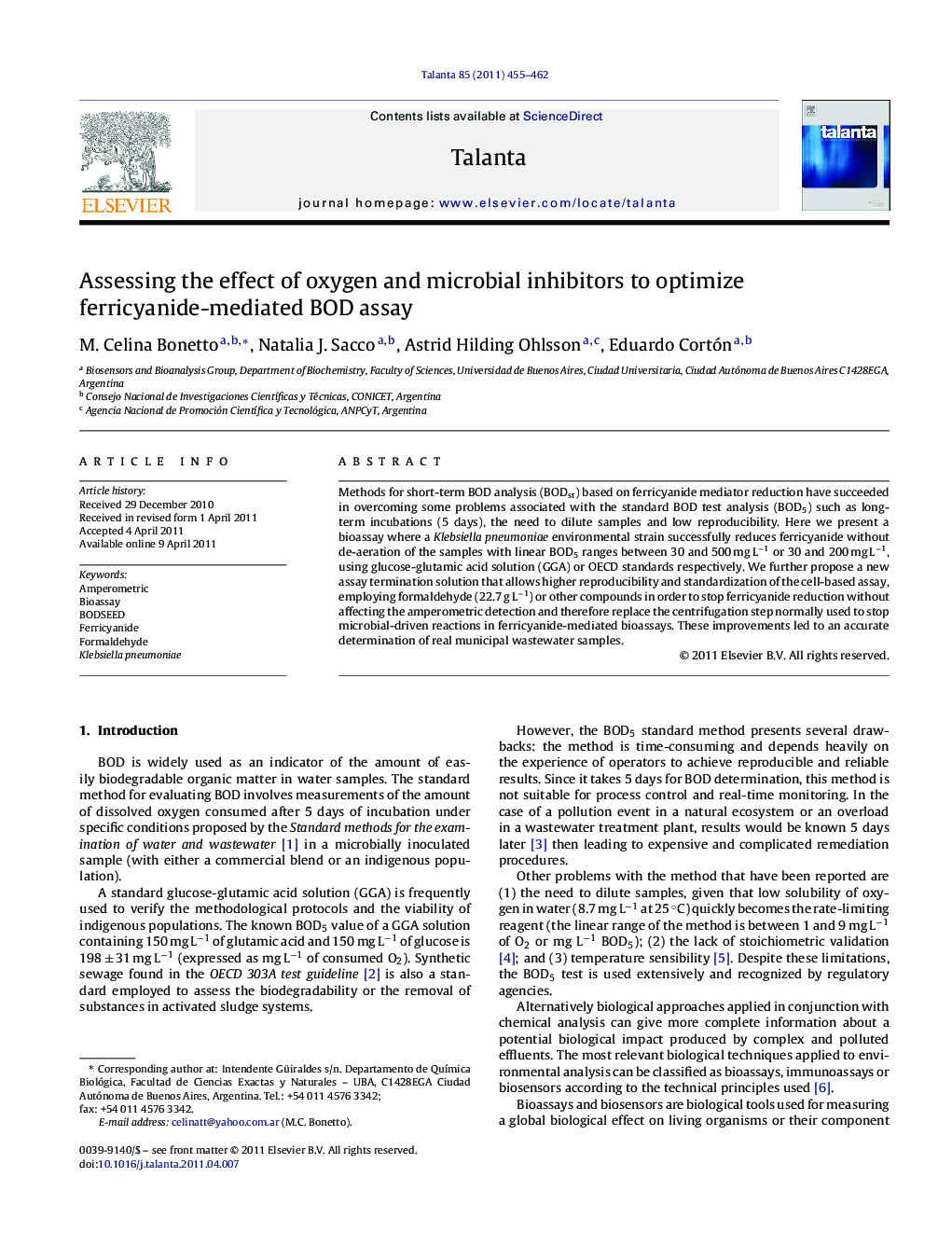| Article ID | Journal | Published Year | Pages | File Type |
|---|---|---|---|---|
| 10559808 | Talanta | 2011 | 8 Pages |
Abstract
Methods for short-term BOD analysis (BODst) based on ferricyanide mediator reduction have succeeded in overcoming some problems associated with the standard BOD test analysis (BOD5) such as long-term incubations (5 days), the need to dilute samples and low reproducibility. Here we present a bioassay where a Klebsiella pneumoniae environmental strain successfully reduces ferricyanide without de-aeration of the samples with linear BOD5 ranges between 30 and 500 mg Lâ1 or 30 and 200 mg Lâ1, using glucose-glutamic acid solution (GGA) or OECD standards respectively. We further propose a new assay termination solution that allows higher reproducibility and standardization of the cell-based assay, employing formaldehyde (22.7 g Lâ1) or other compounds in order to stop ferricyanide reduction without affecting the amperometric detection and therefore replace the centrifugation step normally used to stop microbial-driven reactions in ferricyanide-mediated bioassays. These improvements led to an accurate determination of real municipal wastewater samples.
Related Topics
Physical Sciences and Engineering
Chemistry
Analytical Chemistry
Authors
M. Celina Bonetto, Natalia J. Sacco, Astrid Hilding Ohlsson, Eduardo Cortón,
